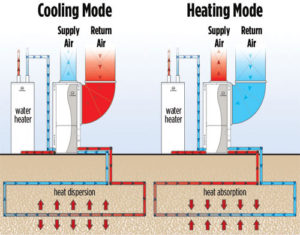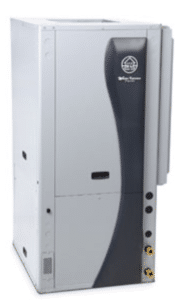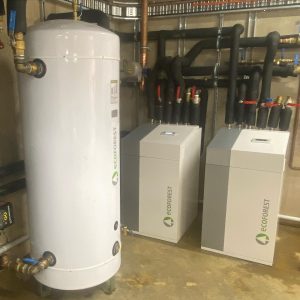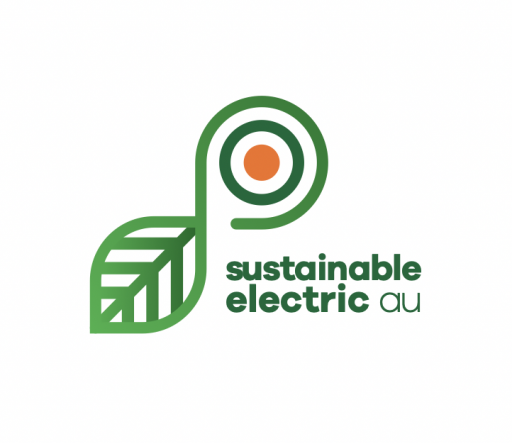What is a Geoexchange system?
What is a Geoexchange system?
A Geoexchange system (sometimes referred to as geothermal or ground source) is an efficient way of providing heating and cooling by utilising the near consistent temperature of the earth as a heat exchange. It is suited to both residential, commercial and industrial applications.
How Does It Work?
A few meters beneath the surface, the earth’s temperature remains fairly constant. Geoexchange takes advantage of this constant temperature to provide extremely efficient heating and cooling.
In winter, a water solution circulating through pipes buried in the ground absorbs heat from the earth and carries it into the home. Inside the home a heat pump is utilised to concentrate the earth’s thermal energy and then to transfer it to either water for a hydronic underfloor, a hydronic radiator system or to air circulated through ductwork to heat the home.
In the summer, the process is reversed. The heat inside the home is extracted from the air and transferred through the heat pump to the ground loop piping. The water solution in the ground loop then carries the excess heat back to the earth.

Overview of how a Geoexchange works by utilising the ground as a heat exchange.
The Main Components Of A Geoexchange System:
The heat pump
The heat pump is the internal component of the system and comes in a variety of configurations. The two main unit types are:
Ducted units: These are connected to ducting within the home or building and provide heating and cooling by blowing air through grilles into the room much like a conventional ducted system. These can provide both heating and cooling

Water to water units: These heat pumps can provide heated or chilled water for hydronic underfloor, hydronic radiator, heated and chilled water fan coil units hot water and pool heating. With the advances in heat pump technology all of the above outputs can be provided from one heat pump.

The Source
The Heat Exchange often referred to as the ground loop is where the heat is either absorbed or rejected. Most Geoexchange systems utilise the near stable temperatures below the ground by either have pipework installed vertically into the ground (50 to 100 m deep) or horizontally in a trench at a depth of about 1.5 meters. Geoexchange heat pumps are not just restricted to being connected to a ground loop other applications that can be utilised for a heat exchange include:
- Bodies of water like the sea, lakes or dams.
- Water from Bores.
- Waste water from a building (Sewer)
- Cooling towers
The distribution system
Due to the flexibility of a Geoexchange system we can provide heated or chilled water for hydronic underfloor heating and cooling, hydronic radiator heating, heated and chilled water fan coil units hot water and pool heating. With the advances in heat pump technology all of the above outputs can be provided from one heat pump.
What Are The Benefits?
With Geoexchange you can have:
- Lower utility bills due to using less power than conventional systems
- Lower maintenance costs due to the heat pumps not being outside in the elements and the heat exchange being in the ground
- Higher levels of comfort, year-round
- Low noise as Geoexchange heat pumps are very quiet
